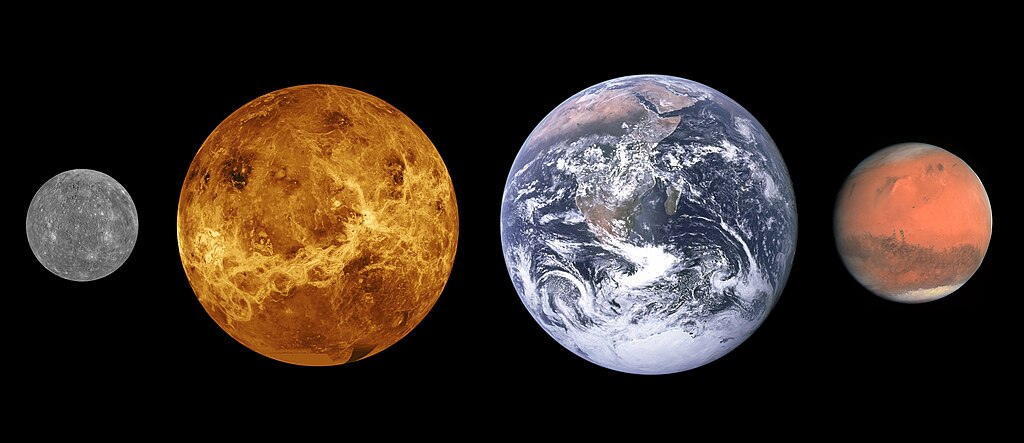Terrestrial planet sizes
Författare/Upphovsman:
Mercury image: NASA/JHUAPL
Venus image: NASA
Earth image: NASA/Apollo 17 crew
Mars image: ESA/MPS/UPD/LAM/IAA/RSSD/INTA/UPM/DASP/IDA
Venus image: NASA
Earth image: NASA/Apollo 17 crew
Mars image: ESA/MPS/UPD/LAM/IAA/RSSD/INTA/UPM/DASP/IDA
Kreditera:
Kort länk:
Källa:
Upplösning:
5208 x 2251 Pixel (3971623 Bytes)
Beskrivning:
This diagram shows the approximate relative sizes of the terrestrial planets, from left to right: Mercury, Venus, Earth and Mars. Distances are not to scale.
A terrestrial planet is a planet that is primarily composed of silicate rocks. The term is derived from the Latin word for Earth, "Terra", so an alternate definition would be that these are planets which are, in some notable fashion, "Earth-like". Terrestrial planets are substantially different from gas giants, which might not have solid surfaces and are composed mostly of some combination of hydrogen, helium, and water existing in various physical states. Terrestrial planets all have roughly the same structure: a central metallic core, mostly iron, with a surrounding silicate mantle. Terrestrial planets have canyons, craters, mountains, volcanoes and secondary atmospheres.
Licens:
Public domain
Mer information om licensen för bilden finns här. Senaste uppdateringen: Sun, 25 Aug 2024 04:03:28 GMT
